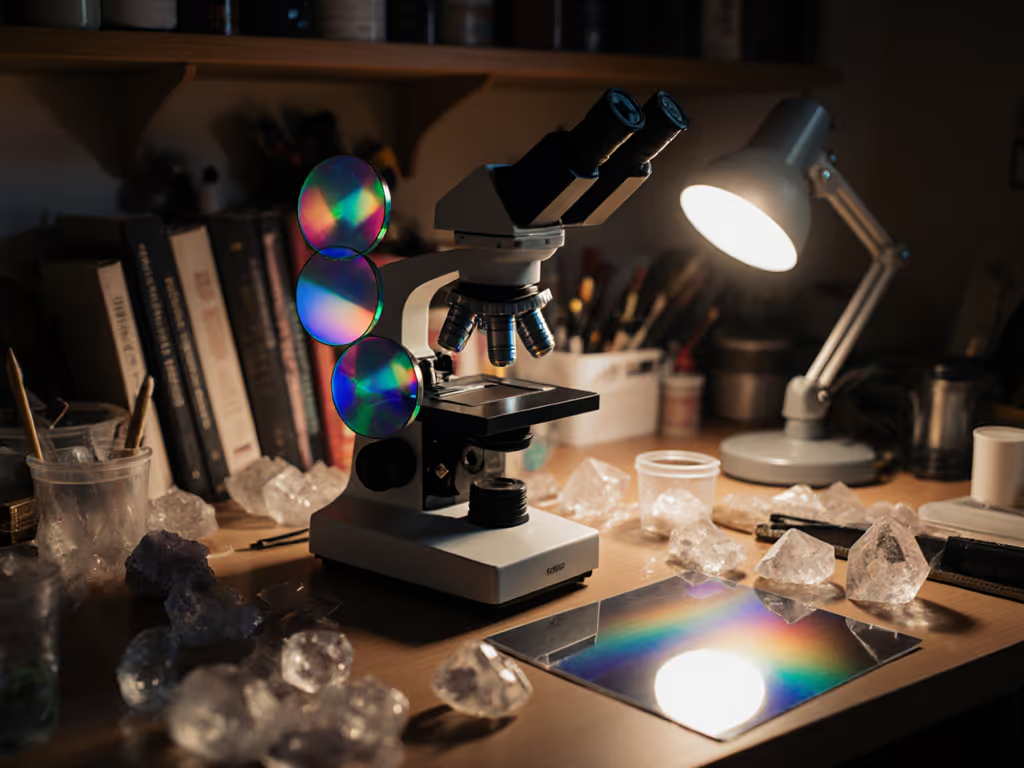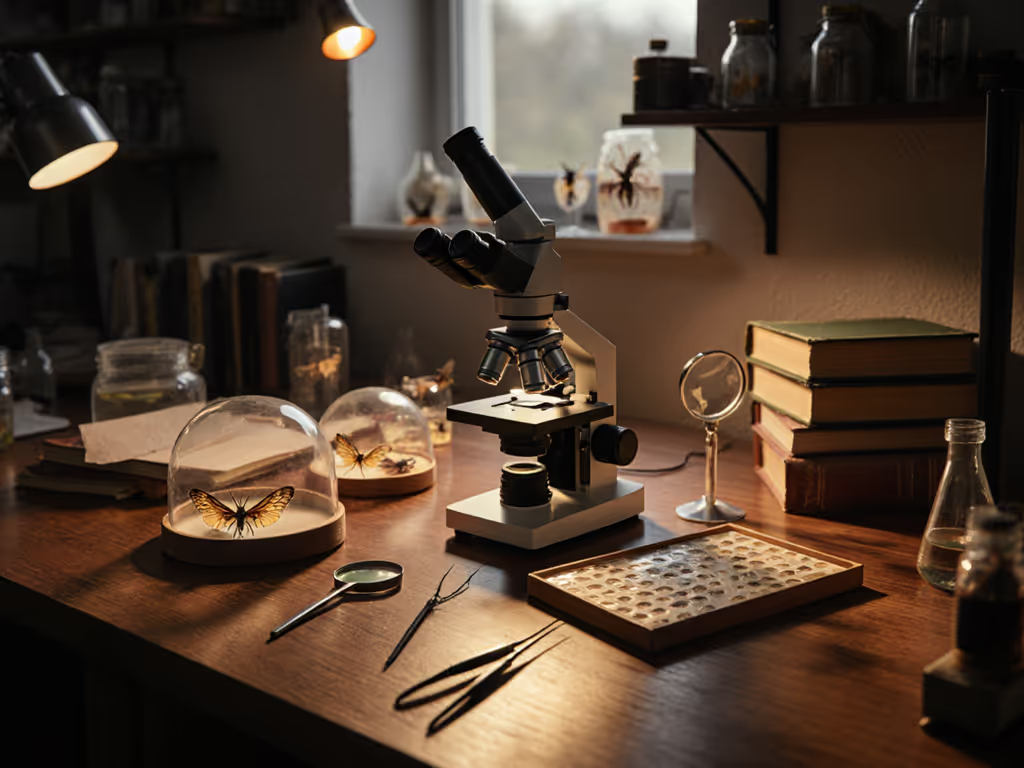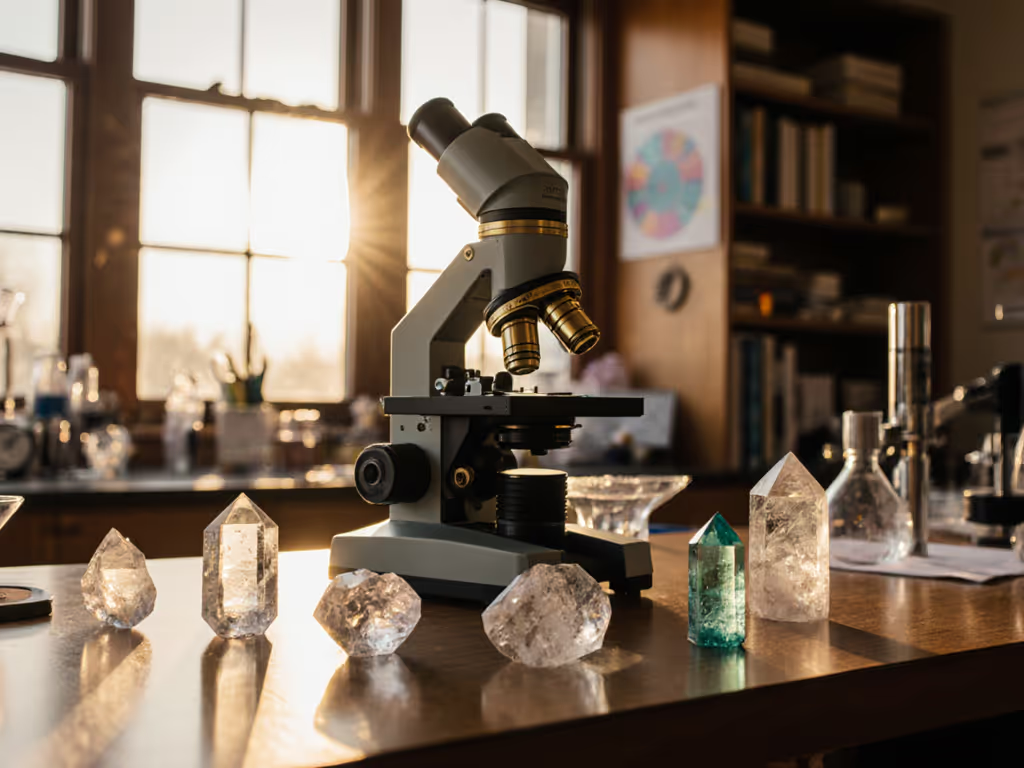
Super-Resolution Microscopy: STED vs STORM vs SIM Accessory Guide

Super-resolution microscopy transcends the diffraction barrier of light, revealing cellular structures at nanoscale dimensions. This guide compares STED, STORM, and SIM techniques through technical specifications, practical considerations, and accessory requirements. Understanding these differences empowers researchers to select optimal modalities for their imaging challenges. For a quick foundation on filter cubes, dichroics, and light sources, see our fluorescence microscopy accessories guide.
Technical Principles Explained
STED (Stimulated Emission Depletion) Microscopy
- Utilizes two synchronized laser beams: excitation (green) and depletion (orange donut-shaped) [1][4]
- The depletion laser forces peripheral fluorophores into dark states, leaving only the central nanometer-scale region emitting light [1][9]
- Scanning mechanism is similar to confocal systems, yet achieves 30-80nm resolution [4][5][7]
- Requires specialized high-intensity pulsed lasers and modulation filters [1][4]
STORM (Stochastic Optical Reconstruction Microscopy)
- Stochastic single-molecule localization technique that sequentially activates sparse subsets of fluorophores [1][3]
- Employs organic dyes (e.g., Alexa Fluor 647) requiring specific buffer conditions [3]
- PALM variation uses photoactivatable fluorescent proteins with genetic modification [3]
- Achieves ~15nm resolution by precisely localizing individual emitters over thousands of frames [2][5]
SIM (Structured Illumination Microscopy)
- Excites samples with patterned illumination (striped light) rather than uniform light [6][8]
- Computationally reconstructs high-resolution images from multiple patterned exposures [6][9]
- Doubles conventional resolution (~100nm) without extreme laser powers [2][5]
- Compatible with commercial widefield systems through add-on modules [5][8]
Performance Comparison
| Parameter | STED | STORM/PALM | SIM |
|---|---|---|---|
| Resolution | 30-80nm | ~15nm | ~100nm |
| Live Imaging | Moderate (laser stress) | Challenging | Excellent |
| SNR Characteristics | Lower SNR | Variable | Highest SNR |
| Sample Prep | Standard fluorescence | Buffer dyes or genetic tags | Standard fluorescence |
| Speed | Medium (scanning) | Slow (frame stacking) | Fast |
Data compiled from experimental comparisons [2][5][7][9] For fundamentals on illumination that impact SNR and phototoxicity, consult our microscope illumination guide.
Application-Specific Recommendations
Live-Cell Imaging Scenarios
- SIM excels due to lower phototoxicity and rapid acquisition [5][9]
- STED requires careful power optimization to avoid cellular damage [4][7]
- STORM/PALM is generally unsuitable without specialized buffers or genetic constructs [3]
Ultra-High Resolution Needs
- STORM/PALM delivers supreme resolution for fixed samples like cytoskeletal details [5][9]
- STED provides nanometer precision for membrane structures and organelles [7][9]
- SIM reaches physical limits faster than others, yet remains insufficient for molecular-scale work [6]
Accessibility & Implementation
- SIM integrates most easily with existing widefield systems [5][8]
- STED demands significant optical expertise and laser engineering [1][4]
- STORM/PALM relies heavily on advanced cameras and localization algorithms [3][5] If your lab's bottleneck is processing and data flow, our microscopy workflow software guide explains acquisition-to-analysis pipelines.
Critical Accessory Considerations
Lasers & Filters
- STED requires precise depletion lasers with vortex modulators ≈5× costlier than standard fluorescence lasers [1][4]
- STORM/PALM needs specific activation buffers and emission filters matched to photoswitching dyes [3]
- SIM benefits from multi-LED arrays replacing traditional mercury lamps [8]
Detectors & Cameras
- STORM/PALM demands EMCCD/sCMOS cameras with single-photon sensitivity [3][5]
- STED uses conventional PMT detectors but requires meticulous alignment [4]
- SIM performs well with standard scientific cameras [5][8]
Sample Preparation Kits
- Antibody conjugation kits for STORM dye labeling ≈$200-$500 per experiment [3]
- STED-compatible commercial mounting media ($150-$300) prevents photobleaching under high laser stress [9]
- SIM requires no specialized sample prep beyond standard immunofluorescence [8][9]
Choosing Your Modality
- Prioritize biological questions: Resolution needs trump theoretical specs. Test plans beat spec sheets.
- Evaluate infrastructure: Existing confocal systems favor STED, and widefield setups adapt better to SIM. To avoid purchase mismatches, verify brand and model fit with our accessory compatibility guide.
- Consider operational costs: STORM buffer reagents and STED laser maintenance incur recurring expenses.
- Validate with samples: Pilot studies using lentiviral PALM constructs or commercial STED samples prevent workflow dead ends.
Further exploration should include trial access to core facilities. The Nikon Z DX 16-50mm lens

Nikon NIKKOR Z DX 16-50mm VR Lens
enables high-quality documentation of microscopic discoveries when paired with eyepiece cameras. Its compact design suits benchtop setups, while VR stabilization helps counter vibration artifacts during time-lapse acquisition. For imaging sensors that keep up with STORM and SIM frame rates, compare options in our digital microscope cameras guide.
Super-resolution selection ultimately balances nanometer precision against experimental pragmatism. As demonstrated when comparing diatoms with sub-$30 filters, modality-matched accessories often outperform expensive alternatives lacking transmission specificity.




